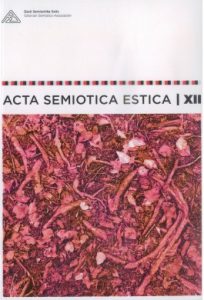Eesti üldlaulupeo tähenduslikkusest
On the significance of the Estonian Song Festival
Author(s): Rein VeidemannSubject(s): Semiology, Sociology of Culture
Published by: Eesti Semiootika Selts
Keywords: centre and periphery; text within text; bipolarity of Estonian semiosphere; markedness-unmarkedness; inner and exterior form; text and function; religiosity of the Song Festival;
Summary/Abstract: The article focuses on the analysis of the meaning and the significance of the Estonian Song Festival, utilizing the concepts of Tartu–Moscow School of cultural semiotics (mainly Juri Lotman). The analysis is conducted within the context of the song festival’s history. The following segments of analysis are distinguished: the development of primary significations in the field of differing influences; repertoire as a text; song festival as a ritual; the dichotomy of the inner and external form of the song festivals. It is asserted that the Estonian Song Festivals are a challenge posed by the periphery to the centre: the tradition of choral songs (Liedertafel) operative in Western Germany spread to the Baltic provinces in the 19th century. Under the leadership of J. V. Jannsen, the format of Baltic song festivals was transmitted onto the first Estonian Song Festival in 1869. The interrelatedness of cultural periphery and centre is also evident in the Moravian Church movement which spread into Estonian territory in the latter half of the 18th century – their ideological pattern becomes both the signifier of the national awakening and of the song festival („the singing congregation”). During the first years of the song festival, its authenticity in relation to Estonian culture constantly posed problems. Although the song festival is a cultural transfer, it is given significance as „our very own”, on the one hand, by Estonian culture’s fundamental transitivity (Estonian culture as a border culture), and on the other hand, by the religious function of the Song Festival. To put it figuratively: Estonians have, at least up to this point, been a people of the Song Festival Religion.
Journal: Acta Semiotica Estica
- Issue Year: 2015
- Issue No: 12
- Page Range: 10-28
- Page Count: 19
- Language: Estonian

